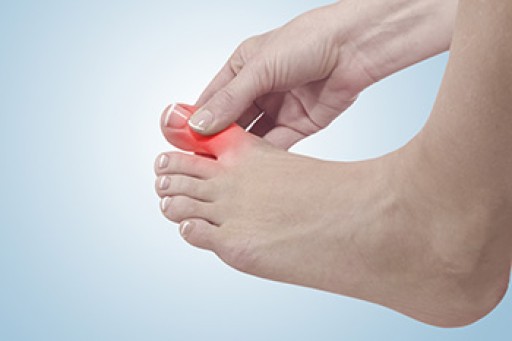
There are many bones in your feet, and they each play an important role in helping your feet move and function. When important bones break or become inflamed, this can result in complications that might be painful or uncomfortable. For example, under your big toe are two sesamoid bones near the bottom of your feet. These bones can become inflamed from an injury or from tension that might occur if your big toe is suddenly and forcefully pushed upward. There are many different symptoms that can be felt from sesamoiditis. The most common symptom is pain. When putting pressure on the feet during walking or other physical activities, it is common for individuals with sesamoiditis to experience pain. However, what may make sesamoiditis difficult for the average person to identify is that there are not usually any noticeable, visual symptoms. That is to say that an individual might experience pain but not be able to point to any visual signs of sesamoiditis on their feet. To diagnose sesamoiditis, a medical professional can perform a bone scan or an MRI to identify the condition. If you are experiencing pain and inflammation in your sesamoid bones, contact a podiatrist who can help you treat the problem.
Sesamoiditis is an unpleasant foot condition characterized by pain in the balls of the feet. If you think you’re struggling with sesamoiditis, contact one of our podiatrists of Associates in Podiatry, PC. Our doctors will treat your condition thoroughly and effectively.
Sesamoiditis
Sesamoiditis is a condition of the foot that affects the ball of the foot. It is more common in younger people than it is in older people. It can also occur with people who have begun a new exercise program, since their bodies are adjusting to the new physical regimen. Pain may also be caused by the inflammation of tendons surrounding the bones. It is important to seek treatment in its early stages because if you ignore the pain, this condition can lead to more serious problems such as severe irritation and bone fractures.
Causes of Sesamoiditis
- Sudden increase in activity
- Increase in physically strenuous movement without a proper warm up or build up
- Foot structure: those who have smaller, bonier feet or those with a high arch may be more susceptible
Treatment for sesamoiditis is non-invasive and simple. Doctors may recommend a strict rest period where the patient forgoes most physical activity. This will help give the patient time to heal their feet through limited activity. For serious cases, it is best to speak with your doctor to determine a treatment option that will help your specific needs.
If you have any questions please feel free to contact our offices located in Pittsburgh-South Hills, and Pittsburgh-Bellevue, PA . We offer the newest diagnostic and treatment technologies for all your foot and ankle needs.











